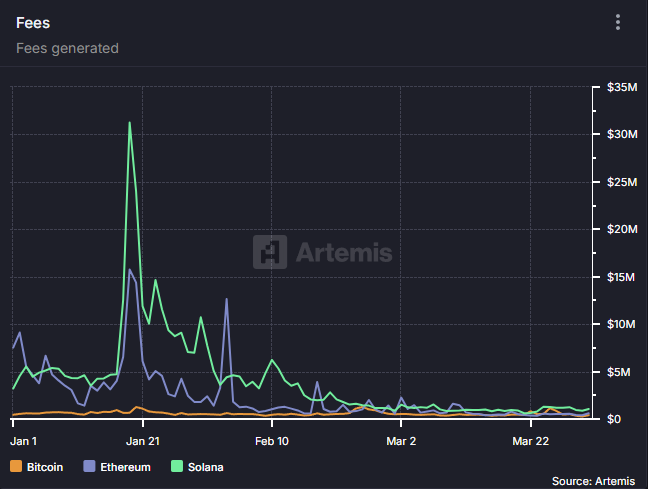
Bitcoin DeFi Market in 2025: Growth, Potential, and Key Metrics
Current State of Bitcoin DeFi (2024–2025)
Bitcoin’s decentralized finance (DeFi) ecosystem – often dubbed BTCFi – has expanded rapidly over the past year, though it remains in early stages. Only about 0.8% of all BTC (by value) is currently utilized in DeFi, reflecting a vast untapped reservoir of Bitcoin liquidity. In fact, Bitcoin DeFi accounts for as little as 0.1% of Bitcoin’s market value by some measures. This means the sector could grow ~300× if even a few more percent of Bitcoin’s supply is put to work earning yield. Recent data confirms momentum is building: total BTC deployed in DeFi protocols has surged by roughly 2,700% year-on-year – an explosive increase from a very small base, signaling newfound interest from investors and developers.
Key Bitcoin DeFi metrics as of late 2024 / early 2025 include:
- Bitcoin DeFi TVL (Total Value Locked): Roughly $5–6 billion in BTC is now locked into DeFi via various protocols. (By comparison, Ethereum’s DeFi TVL is about $130+ billion.) Much of Bitcoin’s DeFi TVL comes from new yield platforms – for example, the Bitcoin-secured protocol Babylon accounts for ~$4.6 billion by itself.

Growth Potential and Addressable Market
Industry researchers see enormous upside for Bitcoin DeFi as infrastructure matures. Bitwise’s head of research, Matt Hougan, estimates Bitcoin staking alone represents a $200 billion market opportunity over time. In broad terms, the addressable market for Bitcoin DeFi is “hundreds of billions” of dollars when considering Bitcoin’s ~$500 billion+ market cap and the pent-up demand to “put Bitcoin to work” earning yield. Even a single-digit percentage of Bitcoin’s supply flowing into DeFi would translate into tens of billions of dollars of new liquidity. This latent potential is why analysts describe Bitcoin DeFi as a 300× growth opportunity.
Several trends are driving this outlook in 2025:
- Institutional Adoption: With Bitcoin crossing $100k and over $100 billion pouring into Bitcoin spot ETFs in late 2024, institutions now hold significant BTC reserves that could be deployed for yield. A recent survey found 43% of institutions are exploring Bitcoin yield opportunities (e.g. lending, staking). Industry executives predict Bitcoin’s new all-time highs and ETF legitimacy will “reinvigorate the entire crypto sector in 2025,” spurring more interest in Bitcoin-based DeFi services. Early examples include Bitcoin staking ETFs launched in Europe that pay around 5–6% APR by staking on Bitcoin layer-2s. Such products could broaden access for traditional investors.
- Yield Demand: There is strong demand to earn passive returns on BTC holdings. As Hougan notes, “Even a 3% yield on Bitcoin is attractive” to investors given Bitcoin’s prior role as idle “digital gold.” Dozens of crypto funds and large BTC holders are actively looking to deploy Bitcoin into DeFi for yield. This demand is kickstarting new protocols – for example, Bitcoin L2s like Babylon and Core now let users stake BTC to secure networks for rewards. By late 2024, Babylon’s Bitcoin L2 had over $5 billion TVL and EigenLayer’s WBTC staking pool reached $15 billion, indicating substantial appetite for Bitcoin yield strategies. (EigenLayer, an Ethereum re-staking protocol, accepts Wrapped BTC as collateral, blending the Bitcoin and Ethereum DeFi worlds.)
- BTCFi Infrastructure: Technological barriers are gradually coming down. While Bitcoin L1 doesn’t support complex smart contracts, a wave of layer-2 solutions and sidechains is bringing programmability to Bitcoin. Platforms like RSK, Stacks, the new rollups (e.g. Core, Merlin), and even ordinal-based protocols are building out lending markets, DEXs, stablecoins, and more native to Bitcoin’s orbit. In 2024, Bitcoin saw upgrades like Taproot Assets (Taro) enabling token issuance on Lightning, and ideas like BitVM for trust-minimized Bitcoin smart contracts are being explored. These advancements could unlock more DeFi use cases for BTC without compromising on Bitcoin’s security-first ethos. Notably, Tether is launching USDT stablecoin on Bitcoin’s Lightning/Taproot layer in 2025, bringing a major stablecoin back onto Bitcoin rails and laying groundwork for Bitcoin-based liquidity in DeFi.
Bitcoin vs Other Networks: A Small but Rising Share
Despite rapid growth, Bitcoin’s DeFi footprint remains tiny compared to Ethereum and other chains – underscoring the room for expansion. Ethereum still dominates DeFi with around $130–$175 billion TVL at its 2021 peak (about $130B as of late 2024). In contrast, Bitcoin-focused DeFi protocols hold on the order of $5–6 billion total. That is only ~4% of Ethereum’s DeFi capital. Even Tron, BSC, and other smart contract networks each host several billions in DeFi. Bitcoin’s native DeFi liquidity is only now breaking the ~$1 billion mark on-chain (spread across sidechains and channels), with the rest coming from cross-chain implementations. This disparity exists because Bitcoin’s network lacked built-in DeFi until recently, whereas Ethereum was designed for it. The Bitcoin community’s conservative approach has historically focused on stability over rapid innovation. As a result, Bitcoin’s on-chain activity, DeFi apps, and fee volumes have trailed far behind newer layer-1s. The chart below (from Artemis data) illustrates Bitcoin’s low on-chain fees and DeFi TVL relative to other chains. However, this dynamic is starting to change.

Importantly, Bitcoin’s advantage is the sheer size and security of its base asset. Bitcoin’s market dominance climbed back to ~60% of the crypto market by the end of 2024. Its market capitalization and liquidity dwarf that of any single DeFi platform. With over 19 million BTC (~$2 trillion in fully diluted value) outstanding, even a trickle of Bitcoin into DeFi can have an outsized impact. For instance, the approval of U.S. Bitcoin ETFs integrated over 1.1 million BTC (>$10 billion) into traditional investment vehicles, showing how much Bitcoin capital is now accessible. The challenge – and opportunity – is to entice a portion of that capital into decentralized protocols. As Binance Research points out, even a “modest increase” in active BTC in DeFi could translate to billions in new liquidity for Bitcoin’s ecosystem. In essence, Bitcoin holds the largest store of value in crypto, so converting more of it from passive holding to active utilization represents a massive growth lever for DeFi.
Real-World Assets and DeFi Trends in 2025
Tokenized Real-World Assets (RWAs) – The on-chain RWA market reached ~$14–19 billion in value by late 2024, led by tokenized private credit and U.S. Treasury bill funds (the largest segments shown). This sector grew about 85% in 2024, reflecting a surge of institutional interest in bringing traditional assets (bonds, real estate, commodities, etc.) onto blockchains. Analysts see RWA tokenization as a multi-trillion-dollar opportunity in the long run (estimates range from 10% of global GDP up to $30 trillion by the 2030s). In the near term, forecasts peg RWA on-chain volume to reach ~$50 billion by end of 2025. Notably, tokenized U.S. Treasury products have been a driving force – by mid-2025, on-chain U.S. Treasury fund tokens (like BlackRock’s BUIDL and others) amassed several billion in AUM, offering stable 4–5% yields via blockchain. Real-world assets are thus becoming a significant part of DeFi, providing real yield streams that complement crypto-native activities.
For Bitcoin DeFi, RWAs present an attractive avenue as well. Bitcoin’s programmability is limited, but by interfacing with protocols that tokenize real assets, Bitcoin holders could eventually tap into stable yield from things like Treasury bills or private credit – effectively bridging Bitcoin’s liquidity into TradFi assets on-chain. While most RWA action so far has taken place on Ethereum and other smart contract chains (over 80% of RWA value is on Ethereum and Layer-2s), the trend underscores a broader point: DeFi in 2025 is expanding beyond crypto-native lending/trading into real-world finance. This maturation benefits Bitcoin too, because a more robust DeFi industry (with clearer regulations and tangible asset backing) can entice conservative Bitcoin capital to participate. Additionally, Bitcoin L2 projects are beginning to explore RWA integrations – for example, stablecoins on Bitcoin (like the upcoming USDT on Lightning) could be used to represent dollars, and Bitcoin-backed lending platforms might start to accept tokenized securities as collateral. The U.S. Treasury Department has even highlighted tokenization’s potential benefits (like improved liquidity and settlement), which bodes well for continued growth of this sector. In summary, RWAs enlarge the addressable market for DeFi (potentially into the tens of trillions), and Bitcoin, as the largest digital asset, stands to gain if it can capture even a fraction of the on-chain real asset wave.
Outlook: Bitcoin DeFi’s “Inflection Point” in 2025
All signs point to 2025 being a pivotal year for Bitcoin DeFi. Multiple industry sources – from Binance Research to Cointelegraph interviews – describe an approaching “inflection point” driven by Bitcoin’s price momentum, institutional adoption, and new technology. Bitcoin’s core value proposition (security, liquidity, and widespread recognition) is now being combined with DeFi’s innovative financial products. We’re seeing the “sleeping giant” awaken: one executive quipped that Bitcoin DeFi is a 300× growth story waiting to happen, and indeed the pieces are falling into place.
That said, challenges remain. Bitcoin’s culture has historically been cautious – heavy emphasis on trust-minimization means many Bitcoiners are wary of wrapped tokens or experimental sidechains. Improving Bitcoin DeFi will require robust cross-chain bridges or federations to bring liquidity from Ethereum and others back to Bitcoin in a secure way. Liquidity bootstrapping is another hurdle: much of Bitcoin sits in cold storage, so incentives (higher yields, new use cases) are needed to “activate” idle BTC. Regulatory clarity will also influence how quickly institutions dive in.
Despite these hurdles, the trajectory is clearly upward. In 2024 we saw the first major steps: Bitcoin gained smart contract capabilities via L2s, Bitcoin-backed stablecoins and lending platforms (e.g. Sovryn on RSK, DLLR stablecoin) grew, and even AI-managed DeFi strategies emerged using BTC as collateral. By 2025, we expect new Bitcoin yield strategies across the risk spectrum – from simple BTC savings with interest, to advanced options strategies using BTC as collateral. Some experts even speculate that as Bitcoin’s DeFi matures, BTC staking yields could become a “risk-free rate” benchmark, analogous to U.S. Treasury rates in traditional finance.
In summary, Bitcoin’s DeFi sector is transitioning from concept to reality. TVL is climbing, products are launching, and big capital is circling in anticipation. While still small relative to Ethereum’s DeFi empire, Bitcoin DeFi’s growth rates and untapped market size are turning heads. With institutions beginning to participate and Bitcoin-centric protocols coming online, 2025 may well be the year Bitcoin’s enormous capital base starts flowing into DeFi at scale. For platforms like Mintlayer and others building on Bitcoin, these trends validate the thesis that Bitcoin is evolving from “digital gold” into a full-fledged financial ecosystem. The groundwork laid now – in infrastructure, liquidity, and integration with real-world assets – could unlock a future where Bitcoin is not only a store of value, but also a primary asset powering decentralized finance.
Sources:
AInvest News on BTC DeFi ainvest.comainvest.com
Binance Research (Mar 2025) binance.combinance.com
Binance VIP LinkedIn post linkedin.com
BlockApex (Jan 2025) blockapex.ioblockapex.io
ChainCatcher 2025 Crypto Industry Report chaincatcher.comchaincatcher.com
Cointelegraph (Dec 2024 & Jan 2025) cointelegraph.com
Cointelegraph What’s Next for DeFi in 2025 cointelegraph.comcointelegraph.com
DeFi Llama https://defillama.com/chain/bitcoin
Hivemind Capital Betting on Bitcoin DeFi (2025) hivemind.capital
RedStone RWA Report (2025) blog.redstone.financeblog.redstone.finance